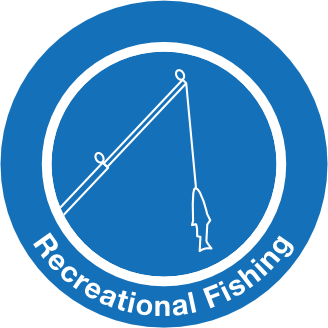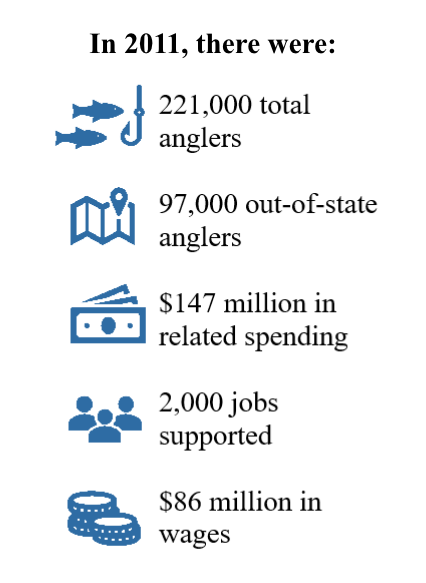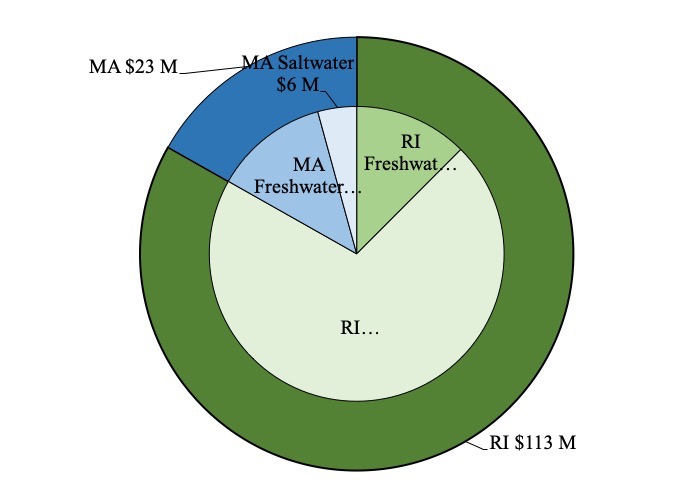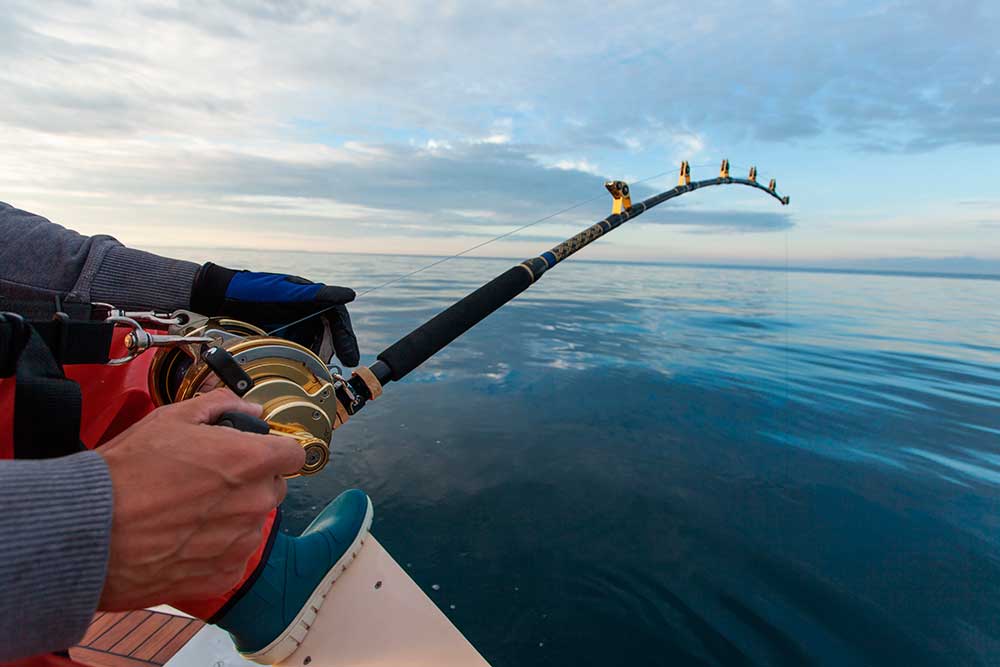

Recent Trends
In 2011, the National Fish and Wildlife Service (NFWS) published the National Survey of Fishing, Hunting, and Wildlife-Associated Recreation and the American Sportfishing Association (ASA) published its own findings. Comparing the data, we found:
- Fishermen spend millions in the NBW: the NFWS data shows that fishermen spent $136 million (2016 dollars) in the NBW in 2011.Most of this was spending of saltwater fishermen ($103 million) over freshwater fishermen ($33 million), and most was in RI ($113 million) compared to MA ($23 million) (see graph). On average, fishermen spent $556 annually. This includes both long and short-term expenditure on items such as fishing gear, bait, gasoline, and licenses.
- Recreational fishing supports jobs: ASA data indicate that fishermen generated $158 million in retail sales in 2011 in the NBW. This supported 2,200 jobs and $86 million in salaries and wages. It also generated $20 million in federal tax revenue and $18 million in state and local tax revenue (2016 dollars).
- Recreational fishing attracts tourists: only 41% of saltwater anglers in RI and 67% of saltwater anglers in MA were residents, a high proportion are tourists that visit the NBW to fish. Recreational fishing, especially in salt water, is a popular activity that draws in tourists and the related economic benefit of tourism (see fact sheet “Tourism” for more information). The average saltwater angler spends 9.6 days per year on the water. Cumulatively, that’s over one million trips and 1.4 million cumulative days spent fishing and bringing visitors to the region.

Future Outlook
Effects of climate change—sea level rise as well as warmer ocean temperatures, changes in salinity, pH, and oxygen levels—will play an important role in shaping recreational fishing in the NBW. The warmer temperatures may cause a species shift, as current species migrate into cooler waters and warmer-water species take their place. Additionally, recreational fishing is affected by water quality – issues such as growing populations and increased rainfall from climate change increases runoff into local surface water. Warmer waters also create environments for harmful algal blooms such as cyanobacteria, commonly known as “blue green algae,” which can lead to illness in humans. Currently, 85% of studied estuarine waters, 80% of lakes and ponds, and 40% of freshwater streams and rivers in the NBW are considered “acceptable” for recreational use. These numbers are likely to be affected by the anticipated changes in water quality and effects of climate change.
Read the full recreational fishing chapter

